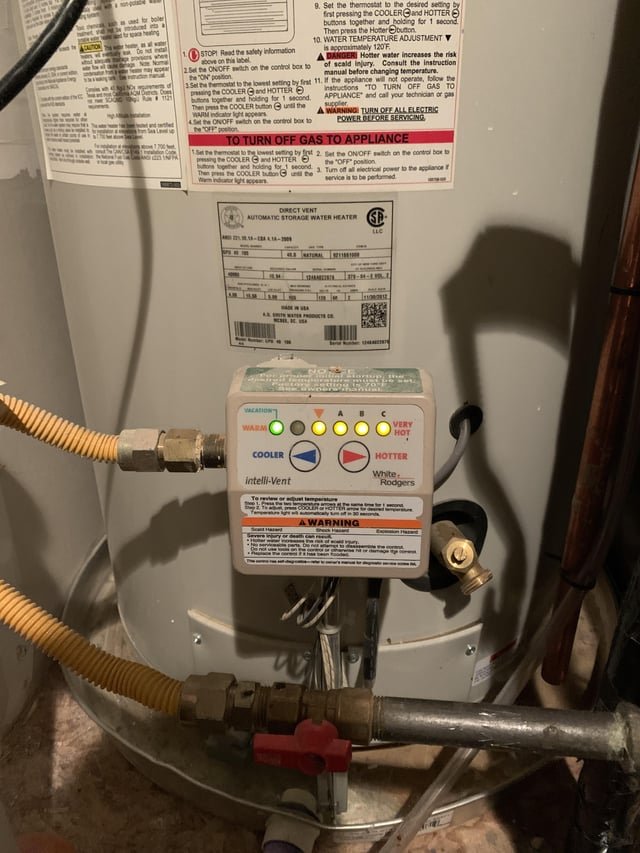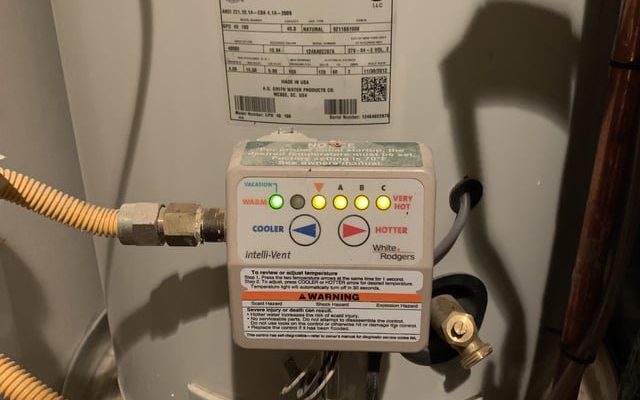
When we talk about the E2 error code, it suggests there’s an issue with the thermostat sensor. This is a critical part of your water heater because it keeps track of the water temperature. Imagine trying to cook without knowing how hot your oven is—pretty tricky, right? Your water heater feels the same way. When this sensor is acting up, it’s time to figure out why, and sometimes that means calling in the pros. Let’s dive deeper into understanding when it’s time to ring up a technician and what might be causing this error.
Understanding the E2 Error Code
Encountering an E2 error on your Kenmore water heater may initially seem intimidating. But, it’s simply a signal that the thermostat sensor, a pivotal component, could not be working correctly. Picture the thermostat sensor as your heater’s way of keeping things under control, much like a conductor in an orchestra. It keeps the water temperature steady by sending signals to the water heater’s control board, guiding it to either kick in or ease off the heat.
Now, when this sensor sends a dodgy signal or no signal at all, the heater can’t perform its job properly. This is why the E2 error appears—it’s a clue from your water heater that something isn’t adding up. It’s like a friendly nudge to take action before any lasting damage occurs. Ignoring the error might result in inconsistent water temperatures or, worse, no hot water at all. Imagine waking up to a cold shower—definitely not the way to start your day, right?
So, what should you do when you see this code? Start by checking if the issue is a mere fluke. Power cycle your appliance, just like you would your computer when it’s acting up. Turn it off, wait a few minutes, and then switch it back on. If the E2 code vanishes, you might have dodged a bullet. But, if it persists, it’s time to investigate further or consider seeking professional help.
Common Causes of the E2 Error Code
There are a few culprits behind the E2 error code. The most likely is a *faulty thermostat sensor*. Over time, sensors can wear out or become damaged, just like any other electronic component in your home. Another possibility is an issue with the wiring. Just as a phone charger might lose its efficiency when the cord is frayed, a water heater can falter if its internal wiring isn’t intact.
Water heaters also require adequate maintenance. A build-up of mineral deposits in the tank can lead to overheating and false readings from the thermostat. Imagine layering up with extra sweaters in the winter—it might cause you to overheat, just like mineral layers can confuse the heater. This build-up might prompt the sensor to send inaccurate data, triggering the E2 code.
So, what’s next? If you suspect a faulty sensor or wiring, it’s usually best to call in a technician. They have the proper tools and know-how to diagnose and remedy the issue. Attempting to fix these problems without expertise might not only exacerbate the situation but could also void any warranties. It’s always wise to play it safe when dealing with potentially hazardous plumbing or electrical components.
When to Call a Technician
You might be wondering, “Do I need a professional, or can I handle this on my own?” Well, here’s the deal: Calling a technician should be your next step if the E2 error code lingers after a reset. Certified technicians possess the skill set for diagnosing and managing water heater issues quickly and safely. They’re like doctors for your appliances, knowing exactly what to look for and how to fix it.
Moreover, certified experts not only repair the existing issues but can also advise you on preventative measures to avoid future disruptions. They can conduct a comprehensive check-up of your heater—something akin to an annual physical exam. Regular maintenance can prevent small issues from snowballing into costly repairs, saving you from more significant headaches down the line.
Scheduling an appointment with a professional might feel like a hassle, especially if you’re busy. However, ensuring your water heater’s longevity and efficiency is worth the time. Trust me, when your water runs perfectly hot and consistent, you’ll be happy you took that step.
Preventative Measures and Maintenance Tips
To keep that annoying E2 error code at bay, regular maintenance is your best friend. Think of it like brushing your teeth—not exactly glamorous, but absolutely necessary for long-term health. Start by having your water heater inspected at least once a year. Technicians can detect minor issues before they morph into significant problems, saving you both time and money.
Additionally, be mindful of mineral deposits. Flushing your water heater every few months can prevent build-up, much like a cleanse for your system. You can also invest in a water softener if your area is prone to hard water. This could extend your heater’s life and improve its efficiency, giving you more bang for your buck.
Lastly, always be attentive to how your water heater operates. Any odd noises or inconsistent temperatures shouldn’t be ignored. Listen to your unit as you would your own body when it’s giving you signs of trouble. Addressing small issues promptly can avert bigger ones. With these simple tips, you’ll enjoy consistent, hot water for years to come—without any flashing error codes.
In summary, dealing with an E2 error code on your Kenmore water heater doesn’t have to be a stress-inducing experience. Understanding this code, knowing when to bring in a technician, and practicing regular maintenance can keep your water heater running smoothly. After all, enjoying a warm shower any time you want is one of those everyday luxuries that’s worth a little effort!
